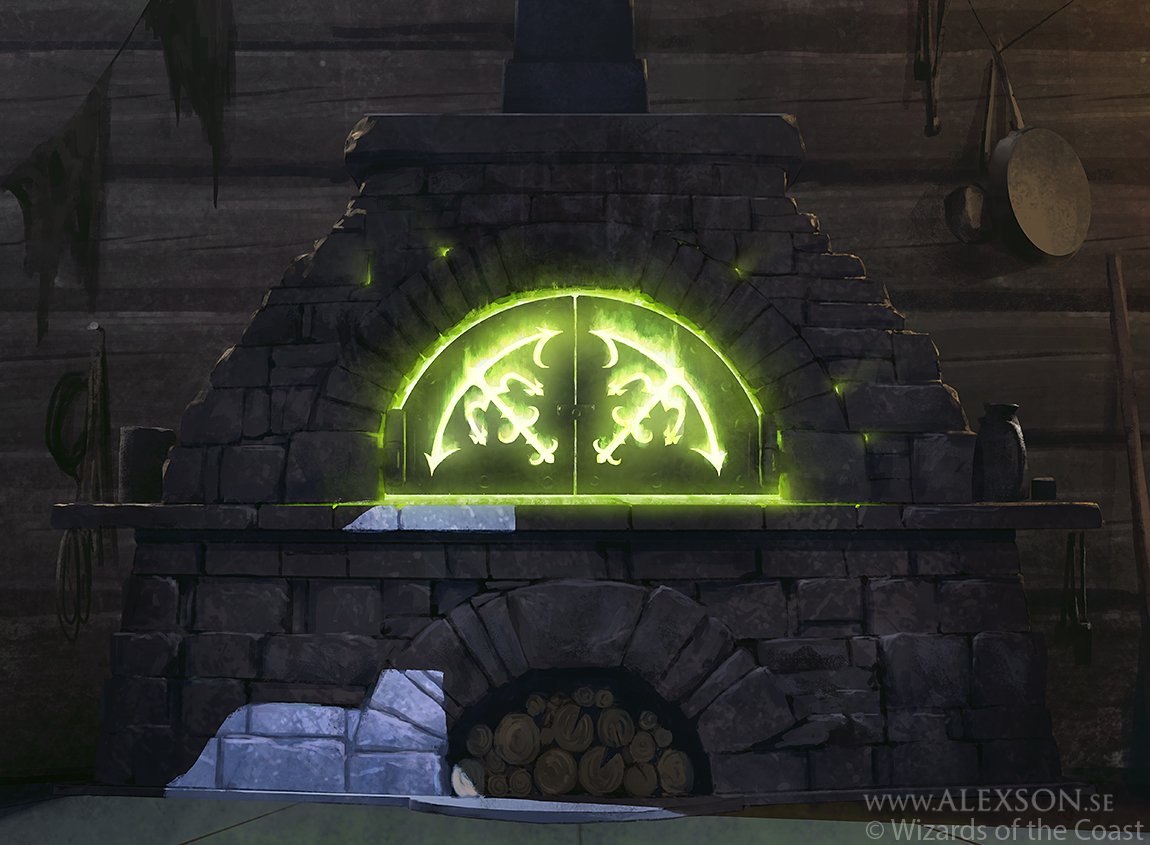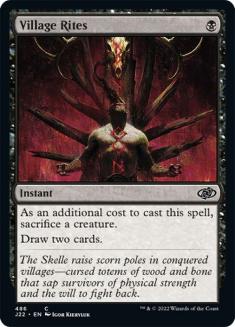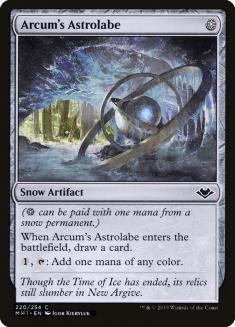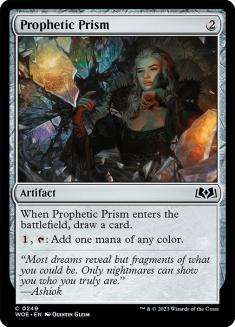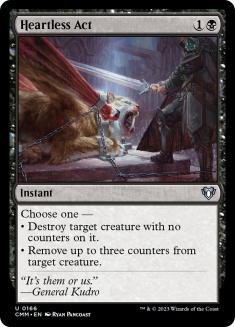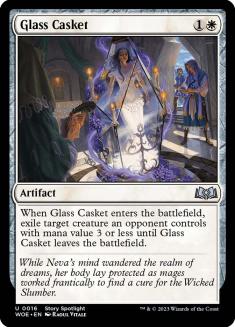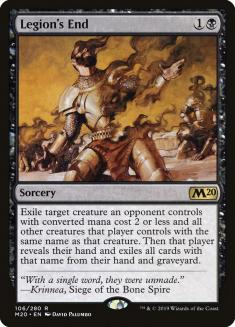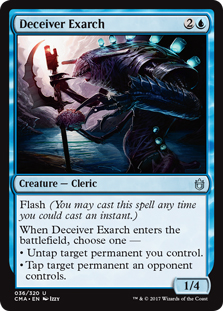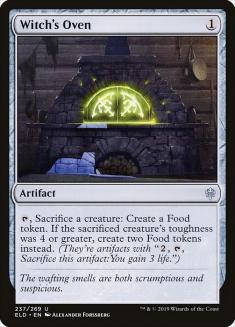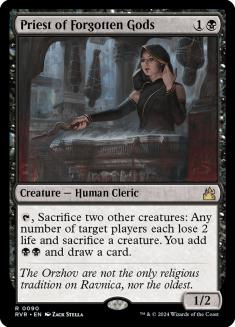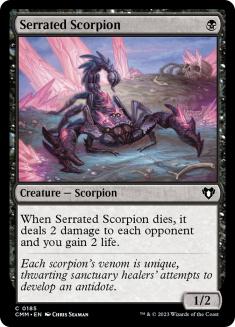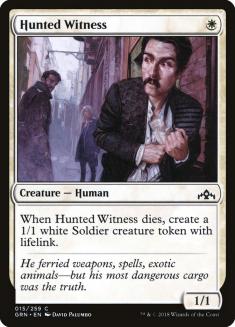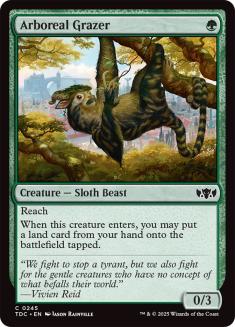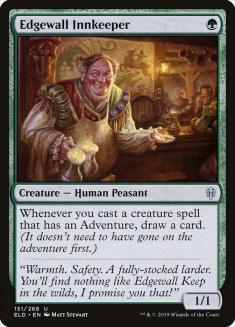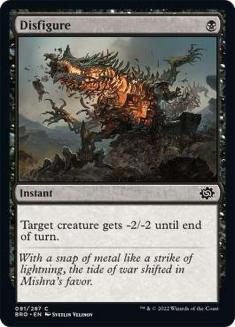It’s rare that a seemingly innocuous common sticks out on a preview list, but some cards just check a lot of boxes:
It feels like just last summer we learned what happens when we shave a mana off a card that was almost playable.
Now, we’re getting a one-drop version of Altar’s Reap, and that’s a big deal.
Drawing from Other Games
Whenever cards are previewed, there’s an unspoken race to find the best cards, learn how they play together, and so on. Informing these evaluations are inferred parallels drawn between the new cards and past experiences. In some cases, these parallels don’t relate to Magic.
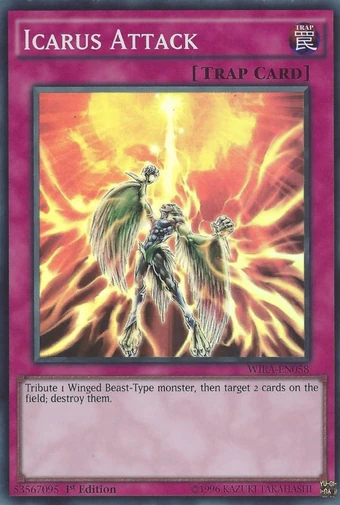
In Yu-Gi-Oh! there’s a card called Icarus Attack that more or less is an instant that reads:
Destroy two target nonland permanents.
Disregarding the way that a card of this power level would translate to Magic, we can focus on the assumptions of how to use the card.
The first read of a card like this is that it’ll create a two-for-two exchange in terms of card advantage. That’s fairly unexciting in most contexts, as both Village Rites and Icarus Attack both require sacrificing a resource up front in order to do anything.
The reality of how these cards play out is what makes them strong, because they’re instants.
This means that they can be used reactively against the opponent’s removal and net an extra resource’s worth of card advantage. This came up at times with Altar’s Reap (and to a lesser extent Costly Plunder) in Limited, yet was just barely mana-inefficient enough to stay out of Standard.
The difference between one and two mana is colossal.
Cards like Altar’s Reap need to gain that amount of card advantage in order to be worth it, because ultimately, they’re Divination with a sacrificed creature being exchanged for a mana. Holding up that two mana every turn carries a real cost. Part of the strength of decks like Splinter Twin in Modern is that they forced the opponent to be down a virtual two mana for the entire game. Holding up Altar’s Reap gives the opponent that advantage.
Holding up a one-drop, on the other hand, is a substantially lighter burden. Having a single mana left over in a turn can just happen in games with two cards at the same spot on the same curve. It’s also harder to play around. Is the opponent just supposed to never cast removal into an open Swamp? Not exactly a realistic line.
Creatures (25)
- 4 Priest of Forgotten Gods
- 4 Mayhem Devil
- 4 Cauldron Familiar
- 4 Woe Strider
- 3 Kroxa, Titan of Death's Hunger
- 2 Lurrus of the Dream-Den
- 4 Serrated Scorpion
Lands (17)
Spells (18)

I’d be remiss not to address the natural first home for Village Rites: Rakdos Sacrifice. That’s because in this deck, Village Rites acts as additional copies of one of the cards that makes the deck tick:
At this point the Oven-Cat loop with Cauldron Familiar isn’t new, but in a lot of ways, Witch’s Oven helps make Rakdos Sacrifice tick. Getting extra resources from Kroxa being sacrificed or turning Claim the Firstborn into a supercharged Smother are the most obvious synergies, but it doesn’t stop there.
Priest of Forgotten Gods, for example, makes its way in and out of Rakdos Sacrifice decks. When it’s good, it’s good, but it’s weak to removal. Village Rites does a reasonable job of mitigating that downside.
This sort of insulation against removal-heavy angles of attack changes how these decks can be built. The level of the selection, at a cost unusual for the color, also opens the door to explore new decks:
Creatures (18)
- 4 Arclight Phoenix
- 4 Cauldron Familiar
- 4 Merchant of the Vale
- 2 Bonecrusher Giant
- 4 Kroxa, Titan of Death's Hunger
Planeswalkers (2)
Lands (16)
Spells (24)

The specifics of the list are certainly rough, but this archetype is made possible by how Village Rites does a few things for the deck.
In older versions of Arclight Phoenix decks, one-mana cantrips were the bread and butter of the archetype. They allowed the deck to get its faster starts without being a major source of card disadvantage.
In this deck, Village Rites is doing something similar. Admittedly it requires a bit more setup, but a chunk of the instants in the deck have creatures stapled to them, and this deck’s Crackling Drake sacrifices itself the first time around as-is.
This list is a great jumping-off point for testing several things in Phoenix at once. Ultimately, Village Rites gives this deck redundancy in a place it didn’t have it before.
On the topic of redundancy:
Creatures (27)
- 4 Hunted Witness
- 4 Gutterbones
- 4 Priest of Forgotten Gods
- 4 Cruel Celebrant
- 4 Cauldron Familiar
- 1 Lampad of Death's Vigil
- 3 Fiend Artisan
- 3 Serrated Scorpion
Lands (19)
Spells (14)
Sideboard

Last season’s Orzhov Lurrus is the kind of deck that simply transforms Village Rites into a cheap Divination. Between Gutterbones, Cauldron Familiar, Hunted Witness, Lurrus, and Call of the Death-Dweller, sacrificing creatures is hardly a cost.
Fiend Artisan and Cruel Celebrant both play into the point referenced earlier about squishy, high-upside permanents and their weakness being mitigated. This deck is simply pushing the theme further.
An additional benefit of a card like Village Rites is that it can “loot” away creatures that don’t translate so well into the late-game. Serrated Scorpion and Hunted Witness are obvious examples in this deck, but this isn’t the only archetype to use creatures that are best by Turn 3.
Creatures that are effectively a spell with an attached body are wonderful fodder for Village Rites. Arboreal Grazer, affectionately nicknamed “Blocks Diamond,” has seen play throughout its time in Standard. Its most common use? Cranking out and protecting three-drop planeswalkers a turn early.
The problem with this strategy? Arboreal Grazer isn’t exactly great in the mid- and late-game for a deck that’s ultimately trying to grind the opponent to dust. Without anything to proactively make use to Arboreal Grazer’s body, such as mutate, it ends up being blank cardboard after the third turn or so.
There’s another entire mechanic of creatures that see as much play for their spells as they do the bodies that happened to be attached to them:
Creatures (25)
- 4 Foulmire Knight
- 2 Smitten Swordmaster
- 4 Order of Midnight
- 4 Lovestruck Beast
- 4 Beanstalk Giant
- 3 Murderous Rider
- 4 Edgewall Innkeeper
Lands (16)
Spells (19)

The upside of the Adventure mechanic was already touched on in the Rakdos Phoenix deck, but this list is really pushing it to the limit. Lovestruck Beast and Order of Midnight in particular play spectacularly with sacrifice outlets. Having a low-cost sacrifice outlet that simply draws to more synergy pieces is a way for this deck to dig more reliably to its famous Swordmaster kills.
Village Rites plays a role similar to Edgewall Innkeeper in many respects. It’s hard to feel bad about an Innkeeper that sees two creatures cast and then eats a removal spell, and, well, remember that example about removal and Icarus Attack?
But what about a deck that leans completely out of the sacrifice being mitigated?
Creatures (29)
- 3 Midnight Reaper
- 4 Gutterbones
- 4 Priest of Forgotten Gods
- 4 Cruel Celebrant
- 4 Mayhem Devil
- 4 Cauldron Familiar
- 3 Woe Strider
- 3 Luminous Broodmoth
Lands (20)
Spells (11)

Originally inspired by DeadlyALPaca on Arena, this take on Mardu Sacrifice is operating under the assumption that all of its creatures will be dying at some point. This deck is truly planning to have Village Rites serve as a single-mana draw-two – with the upside of being a sacrifice outlet.
This deck is really pushing Rites’s ability to churn through its caster’s library – doubly so with the likes of Midnight Reaper. Luminous Broodmoth over Lurrus of the Dream-Den is the loudest indicator that this deck is interested in combo-killing with the duo of Cruel Celebrant and Mayhem Devil.
Like most of these decks, the Cat-Oven duo is remarkable at locking down the game while it assembles the combinations of cards it’s looking for. Between Woe Strider, Midnight Reaper, and Village Rites, assembling a rogues’ gallery of sacrifice outlets and payoffs is academic.
Format Adaptation
In a lot of ways, the low cost of Village Rites is a loud signal that Wizards of the Coast is consciously working to reduce the efficacy of Doom Blade and friends.
Cards like Fatal Push and Lightning Bolt have been prevalent throughout the duration of every format where they’ve ever been legal because of their low cost. The increased power of threats, and countermeasures against removal, does a lot to make cards like Terminate the worst they’ve ever been.
If Village Rites catches on and becomes a mainstay in any large deck, it’s going to create a dilemma for the grindy decks of the world: what’s the best way to fight a creature deck when they have a reasonable way to clown spot removal?
Sure, an uptick in the cheaper spot removal that’s available is a start, but what will actually happen is that midrange decks will look more to ways to clog the ground and capitalize on stalled battlefields. Think more Mangara, the Diplomat and less Murder; more Time Wipe and less Fire Prophecy.
When there are parallels to draw in other games, it’s easy to think of the first-level applications for cards like Village Rites, but finding its place in Standard? It takes a village.

